#persian alphabet
Text
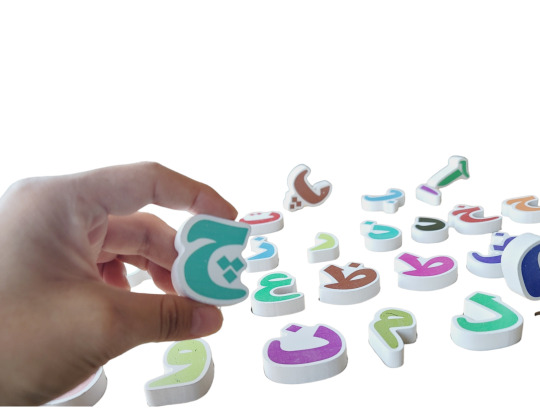
Persian/ Farsi/ Dari Alphabet
#farsi#persian#alphabet#iranian#iran#afghan hound#the afghan whigs#crochet afghan#afghanistan#afghan women#smallbuisnessowner
2 notes
·
View notes
Text
#friend thought it was cursed that i use a normal russian keyboard (none of that phonetic bullshit) but without russian keys#joke's on him now i type in english on a persian keyboard#for a minute my pen was running out of ink so half the keys were just blank#i think that'd be a power move tbh#but sadly i can't touch type persian#i mean i barely know the alphabet so. first thing's first
6 notes
·
View notes
Text
It's so cool to at least know something of several languages. If I'm reading something simple, like comments under President Zelensky's posts on Instagram, I can at least get thr gist of some comments if they're in German, Spanish, even French to a degree bc I've absorbed some through reading classic books plus it's Latin based. I can also understand some basic Ukrainian now. I love to be able to read a different alphabet. I can't get over it-- what was complete nonsensical code before is now coherent-- I can at least sound it out if I don't know the meaning, and i can read any city signs.
#Language#German#Spanish#Ukrainian#I'm far from being fluent#I want to learn more languages#Sadly after trying... I still don't understand even Arabic alphabet#It's so. Hard#I want to learn Turkish#Persian#Indonesian#Others
5 notes
·
View notes
Text
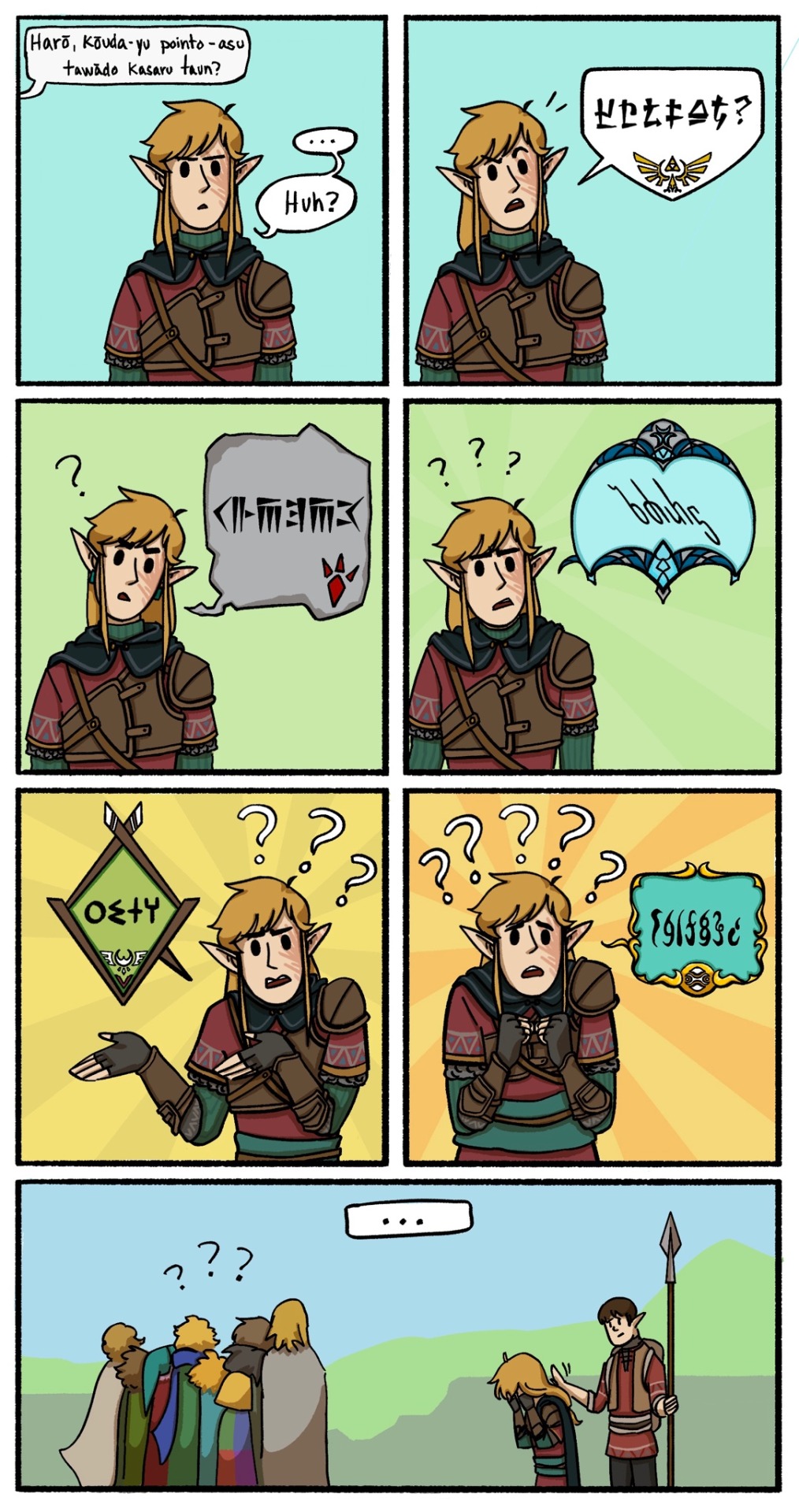
Listen he’s trying really hard ok
This comic is based on Language Barriers by the amazing @quasar-crew!! I love this fic so much and I was thrilled to be able to make ark for it for the LU Writers Appreciation Project!
I also thought it was a great time to bring out the language nerd in me, so it was fun researching different scripts that could work to represent the different languages!! (Although the research mainly comes from Wikipedia, so I can’t guarantee accuracy) Breakdown under the cut!
Hylian: I used the in-game hylian script for this one
Goron: the script is Old Persian cuneiform! I picked this one because I thought the look fit well and it’s a script designed to be primarily cut into stone
Zora: the script is nushkuri, a writing system used for the Georgian language. It was picked because was trying to match the script that’s present on the Zora monuments in botw, which is also why I added a heavy slant to it!
Rito: this script is Tifinagh, used to write Berber languages. This one was mostly picked because I thought the look fit well!
Gerudo: this is the Gerudo alphabet, it makes it’s first appearance in Ocarina of Time!
1K notes
·
View notes
Text
Conlanging Issues: A Compendium
NOTE: This question was submitted before the Nov 1, 2023 reopening and may not adhere to all rules and guidelines. The ask has been abridged for clarity.
Most of my questions are about linguistics. […] One of the major locations in my story is a massive empire with cultural inspirations ranging from North Africa in the far south to Mongolia/Russia in the far north […] The middle region is where the capital is and is the main root of culture, from which Ive been taking inspiration from Southwest Asia […], but most notably southern regions of India. I've tried to stick to the way cities are named in Sanskrit-based languages but added the names of stars to the front (because the prevalent religion of this region worships the stars [...]). So Ive ended up with names like Pavoprayag, Alyanaga, Alkaiduru, Alcorpura, Cygnapete, etc. Is this a consistent naming system or should I alter it in some way? The empire itself is named the Arcana Empire since [...] each act of my story is named after a tarot card [...].
Another region in my story is based more on parts of South China and North Vietnam, so I've tried to stick to names with a Chinese origin for that. I understand the significance of family names in southwest [sic] Asia, so I wanted to double check [...]. They have only two short given names. Based on the birth order of the child, the first half of the name comes from the fathers family and the second half from the mothers family. It is seen as disrespectful not to use both names because using only one is seen as denouncing that side of your family. Thus I have names like Su Yin, Dai Jun, and Yi Wen for some of the characters from this region, and the city itself that they are from is named Bei Fen.
On the other hand, Im having further trouble naming characters. […] Ive been trying to give my human characters names from real human cultures to distinguish them from the website-generated names of say, orcs, elves, dwarves, etc, but I think I should change many of the names Ive used to be more original and avoid fracturing real world cultures for the sake of my worldbuilding. […] Im still very weak in the linguistics area (even after four years of French, sigh) and am having trouble finding where to read about naming patterns so I can make new ones up. I read your naming guides but am still having trouble on where to start for specific languages. […] Im trying to look into Sanskrit, Turkish, and Persian specifically.
You're Going Too Broad
In my opinion, you’re casting too wide a net. You mentioned looking into Sanskrit, Turkish, and Persian to develop fantasy names. These languages are very different from one another, so unless you’re using them separately for very different parts of your world, it will be hard to draw inspiration from them in a way that makes sense. You’re taking on a huge amount of research in order to worldbuild cultures that span a massive geographical area (basically all of North Africa and Asia?) and have very little in common. Are you sure you want to take on that task?
I could see it being more manageable if most of your story is set in a small region of this world, which you will then research in depth to make sure you’re being as specific as possible.
Taking Persian as an example, you’ll have to decide whether you want to use Old Persian, Middle Persian, or Modern Persian. Each of these comes with a different alphabet and historical influences. They’re also associated with different periods of time and corresponding cultural and social markers. Once you’ve decided exactly when and where you want to start from, you can then expand the borders of your area of focus. For example, if you’ve decided to draw inspiration from Achaemenid Persia, you can then look at the languages that were spoken in the Achaemenid Empire. A quick Google search tells me that while Old Persian was the empire’s official language, they also used Aramaic, Akkadian, Median, Greek, and Elamite (among, I’m sure, many many others and many more regional variations). Further research into each of these will give you ethnic groups and bordering nations that you can draw more inspiration from to expand out your worldbuilding.
Don’t forget to make sure you’re staying within the same time period in order to keep things consistent. It’s a lot of work, and this is only for a small portion of the continent-spanning worldbuilding you’re trying to do.
You can get away with painting the rest of the continent in broad strokes without too much depth if the story doesn’t go there and you don’t have any main characters from those parts of the world. Otherwise, you’ll need to put this same level of detail into your worldbuilding for the area with Turkish-inspired names, and again for the area with Sanskrit-inspired names, and so on.
I know this isn’t what you were asking, but I honestly have a hard time helping you figure out where to start because your ask is so broad I don’t quite know where I would start myself. So, this is my advice: focus down on one region and time period and go from there. Feel free to write back once you’ve picked a narrower focus that we could help you with.
- Niki
So there’s logistical issues in regards to your naming system for southern China-coded regions. One issue is history: mainly on how there is not simply one language in China but multiple due to having a lot of ethnic groups and the size of China. South China in particular has different dialects and languages than the North as seen in this map of Chinese languages and dialects. There’s also how historically Mandarin was not the official language until 1913 in China and historical China saw vast changes in territory dependent on the dynasty. Before then, Mandarin was primarily a northern Chinese language based in Beijing while southern China had its own languages, dialects, and dynamics. Not to mention, historical China saw an evolution of language just like English has Old English, Middle English, Early Modern English, and Modern English. For instance, Vietnam was once part of China during the Tang Dynasty and at another point, it was not part of China.
-Mod Sci
If You’re Borrowing Whole Words or Elements, Research More
The other issue is inconsistency with the cultures you’re deriving this conlang from. In regards to “two given names,” the Chinese name I was given was one syllable and then I would have a last name that was also one syllable. There’s also how not every family is perfect. Not every marriage is sanctioned and some children may come from single parents. Some families may not cooperate with marriage and sometimes children may be abandoned with unknown parents. There does not seem to be contingencies for these names under this conlang system.
The main problem with conlangs is that one needs to truly understand the languages one is drawing from. Tolkein managed to create conlangs due to training in linguistics. Mandarin is already a difficult language with multiple tones, and trying to use it for conlangs without knowledge of how Mandarin works or a good foundation in linguistics is just a Sisyphean endeavor.
-Mod Sci
Four years of French wouldn’t have taught you about linguistics as a science or anything about the language families you’ve listed - Indo-Iranian, Sino-Tibetan, and Turkic, nor any Asian naming conventions. I agree with Niki that you need to narrow down your research.
Pur/pura means city in Sanskrit (ex: Gurdaspur, Hoshiarpur). Prayag is a place where pilgrimages are done. Naga isn’t a place name in Sanskrit (google says it means snake), nagar is and it means town. X Nagar is a very common name for places (Ex: Rajinder Nagar). Many cities in Karnataka have names ending in uru (Bengaluru, Mysuru, Mangaluru, Tumakuru, etc) but the language of Karnataka is Kannada - a Dravidian language and completely different family from Sanskrit (Indo-Aryan). I’m not sure where “pete” came from. “Bad” and “vaal” are common suffixes for places too (Ex: Faisalabad, Allahabad). A disclaimer that I do not speak Sanskrit, I speak Punjabi, which is a descendant of Sanskrit and in the same linguistic family (Indo-Aryan languages).
- SK
Also, This Is Not…Really Conlanging.
Hi OP. Linguistics refers to the science of studying how languages work, not the discipline of learning languages. And nothing shows that gap more than how you have thus far approached constructing fictional languages and toponyms.
The reason why Sci and SK have a lot to say about your place names is because they don't resonate—you have borrowed whole words into your toponyms (place names) from a variety of languages—without an accurate understanding of what these words mean, how they’re pronounced, where they’re derived from—and expected them to work together. I suggest you read the links below on why conlanging is not as simple as choosing some languages and mashing their IRL words together:
Why Using Random Languages Wholesale in your Fantasy is a Bad Idea
Pitfalls of Mashing Countries and Languages in Coding
In your city names, for example, you’re using star names from multiple languages that use different sets of sounds represented by different sets of historical spelling rules. “Cygn-” and “Arcana” stick out like a sore thumb—the fact that one “c” is /s/ and one is /k/ is an obvious flag that they are Latin-derived English borrowings. This is because spelling rules were created in Middle English to make sense of the mix of “c” pronunciations across words of Indo-European origin due to a historical split called the Centum-Satem division. This is a phenomenon that is very specific to our world history, and to the history of English at that. Ironically, in your attempt to avoid stock fantasy names (which also often fall into the Latin-derived English pit), you are taking the exact same approach to naming.
Like Niki said, your selections are far too broad to code under a single umbrella. Do you expect that whatever language that city name came from runs the full gamut of sound inventory & spelling variety that spans multiple continents and hundreds of languages? Because that’s not how languages work. (And yes, I mean hundreds. Indigenous languages and linguistic diversity are a thing. See Niki’s note about just the languages in Persia. And nation-states bulldozing over those languages and pretending it’s just one language is a thing. See Sci’s note about China.) I haven't even talked about the variation in morphology (how words are formed) or syntax (sentence structure).
Please just read or re-read my guide on “naming conlangs” in this post and start from there.
~ Rina
PSA ON CONLANGING AND FANTASY NAMES:
For fantasy language asks submitted after Nov 1, 2023, the asker must indicate that they have read Mod Rina’s conlanging posts linked in FAQ 2 (Guides and Posts by Topic) of the Masterpost under the question “How do I make a fictional language for my story?” While this is an older ask, we are posting it as an example to our followers.
Per our new rules, any questions that can be directly answered in or extrapolated from the FAQs, or questions that indicate that the relevant resources haven’t been read, will be deleted with a note in the Deletion Log explaining why.
As always, if this post was helpful or educational to you, please consider tipping the relevant mods: SK, Niki, Sci, and Rina.
Edited for terminology errors
324 notes
·
View notes
Text
Tara Yummy - NSFW Alphabet

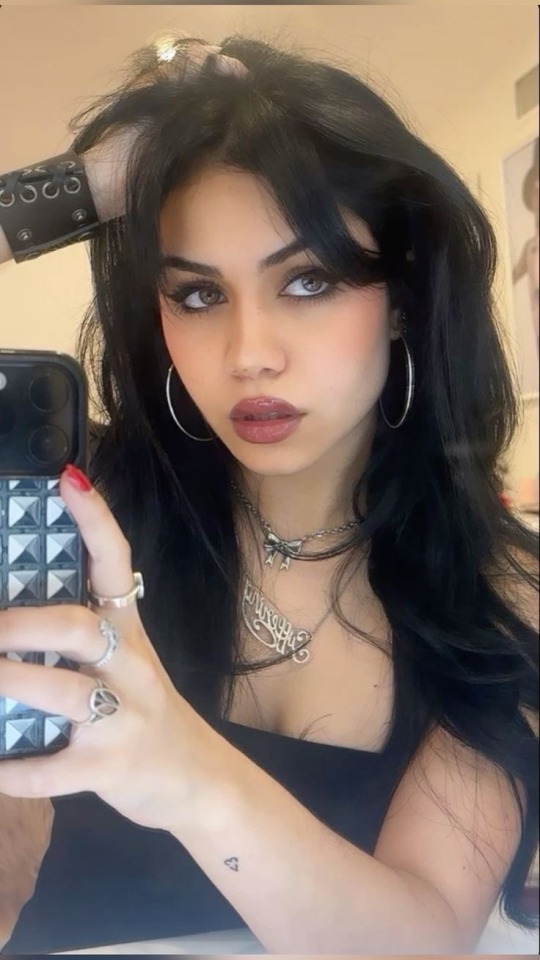
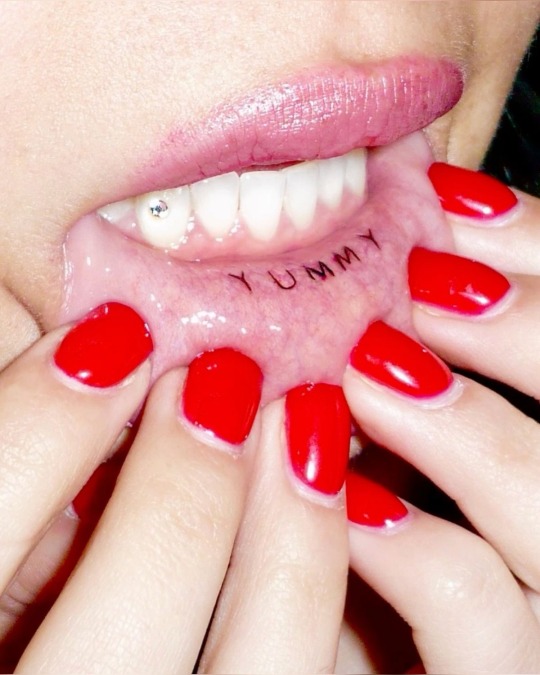
Tara Yummy x Fem!Reader
Masterlist
A = Aftercare (what they’re like after sex)
She’s definitely the best. She’ll always cuddle you, bring you water and snacks. Then she will discuss what happened and make sure you liked everything. She’d be overall the best at making you feel comfortable and safe.
But if she was the one needing comfort she’d be very clingy and expect a ton of cuddle that you are happy to give her :))
B = Body part (their favorite body part of theirs and also their partner’s)
I feel like her favorite thing about herself is her hands or her tongue. She loves when she makes you get off. It is such a turn on for her to know that she can bring you so much pleasure through just her fingers or her tongue.
Her favorite body part on you would be your boobs. When she goes down on you she loves to reach her hands up and play with them. Plus they make a great pillow when you’re cuddling.
C = Cum (anything to do with cum, basically)
she would definitely make you cum on her fingers just to kiss down your body and “clean you up” with her tongue.
She definitely loves riding your face too. She loves when you taste her, and just the thought of cumming on your face can push her over the edge.
D = Dirty secret (pretty self explanatory, a dirty secret of theirs)
Before you started dating she’d stalk your instagram and get off to your photos
E = Experience (how experienced are they? do they know what they’re doing?)
I feel like she’s not that experienced but she’s very eager to learn and is excited to know exactly what to do to make you cum.
F = Favorite position (this goes without saying)
She definitely loves face sitting, especially sitting of your face.
I think she’d also love doggy. She loves when you put on the strap and fuck her from behind.
G = Goofy (are they more serious in the moment? are they humorous? etc.)
She can be goofy in certain moments, if one of you slips or anything awkward happens, but other than that she’s pretty serious and too lost in pleasure to even think of any jokes.
H = Hair (how well groomed are they? does the carpet match the drapes? etc.)
She’s said before because she’s Persian she grows hair in a lot of unwanted places. I feel like she’s pretty well groomed but wouldn’t mind growing it out or shaving. Honestly she’d probably match her partner’s preference.
She wouldn’t mind if you didn’t want to shave, she definitely understands.
I = Intimacy (how are they during the moment? the romantic aspect)
Tara is a very romantic person and will always make you feel loved and appreciated. She uses intimacy as another way to show her love for you.
J = Jack off (masturbation headcanon)
Most of the time when she’s horny, she’ll come right to you. If you aren’t in the mood or not around she’ll respect it and take care of it herself.
When you aren’t around/at work she will send you messages telling you how wet she is and how badly she needs you, just to tease ;)
K = Kink (one or more of their kinks)
Bondage: I feel like she likes being tied up. She likes the feeling of letting go and letting you take control of her pleasure
Edging: Tara’s a big tease and i feel like she’d love to bring you right to the edge just to pull away at the last second and watch you squirm. Don’t worry though, when she finally does let you cum you’ll be seeing stars.
Praise: she’d love it and i mean she’d just melt if you told her she’s a good girl. She loved being praised especially when she’s eating you out,
“You’re doing so good for me. Making me feel so good, what a good girl”
she’d be moaning into your pussy.
L = Location (favorite places to do the do)
I feel like she’d like to keep it simple and in the bedroom. I feel like the “craziest”place she would fuck would maybe be in the car? even that feels a little too risky for her though.
M = Motivation (what turns them on, gets them going)
jealousy. You love to tease her, have someone flirt with you just to rile her up. She’s drag you away from them….and let’s just say you’d have a very long night ahead of you.
N = No (something they wouldn’t do, turn offs)
I feel like she’s not into anything that could seriously hurt herself or her partner. She’s okay with a little spanking and light pain play, but nothing too extreme.
O = Oral (preference in giving or receiving, skill, etc.)
She loveeessss making you feel good. She could spend hours in between your thighs. She wasn’t that experienced when you first got together, but she’s a very quick learner and was very eager to please you.
She also loves when you go down on her, she loses all thought and most of her ability to speak which is quite impressive considering she usually doesn’t know when to stop talking :))
P = Pace (are they fast and rough? slow and sensual? etc.)
It depends on her mood. If she’s jealous or pent up she becomes very rough and likes it fast but if she has the time she likes to drag it out for as long as possible and push you over the edge as many times as she can.
Q = Quickie (their opinions on quickies, how often, etc.)
They aren’t her favorite, she likes to take her time making you fall apart.
R = Risk (are they game to experiment? do they take risks? etc.)
She’s not a big risk taker, I feel like she’d rather be able to enjoy the moment by doing something she’s comfortable with than try something new.
S = Stamina (how many rounds can they go for? how long do they last?)
She could go all night. With her, you are both cumming until you physically cannot cum anymore lol
T = Toys (do they own toys? do they use them? on a partner or themselves?)
I feel like she definitely owns a vibrator for herself, but loves to use it on you. She also owns a strap on and enjoys using it on you every once and a while.
U = Unfair (how much they like to tease)
Tara is the biggest tease ever. She loves to work you up and leave you hanging. She loves edging you and dragging your orgasm out for as long as possible.
But when you tease her, oh boy. She will immediately start begging. She loves when you tie her up and take control, even if it means you tease her a bit.
V = Volume (how loud they are, what sounds they make, etc.)
She’s LOUD. like really. She definitely moans a lot. She has no shame about it and wants you to know how good you make her feel. She definitely talks a lot too
“yes just like that.” “that feels so good, baby” “I wish you could see yourself. You look absolutely sinful right now. So hot, lovely”
W = Wild card (a random headcanon for the character)
She has a mommy kink. No further explanation needed.
X = X-ray (let’s see what’s going on under those clothes)
Y = Yearning (how high is their sex drive?)
I feel like she’d definitely want to get intimate about 3-4 times a week. You both have busy schedules so it’s hard to find tim but you both make it work.
Z = Zzz (how quickly they fall asleep afterwards)
I feel like she is still buzzing with energy afterwards. Have you seen her youtube videos, she always has energy. But she’d be willing to cuddle with you and stay with you if you were feeling tired. She just would want to be with you after.
#tara yummy#tara yummy x reader#tara yummy x fem!reader#tara yummy imagine#tara yummy fic#tara yummy smut#tara yummy x you#jake webber#jake webber x reader#johnnie guilbert x reader
63 notes
·
View notes
Photo
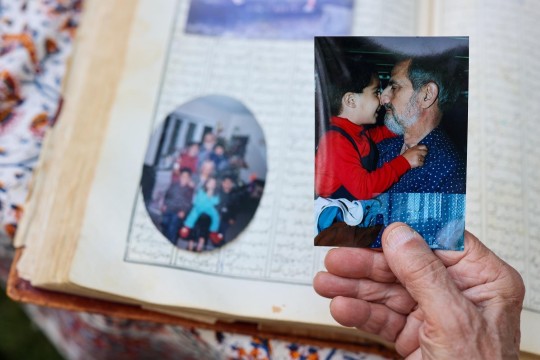
(47/54) “When our grandchildren were born we moved to America to help raise them. First came Ahang’s son Sepanta. Then when I turned sixty we moved into Maziar’s house to help raise his newborn twin boys. And that’s where we’ve been for the last thirty years. The year that we moved in Mitra made me swear an oath. She made me promise that I would die before her, because she couldn’t stand the thought of me being with another woman. Maziar and his wife were doing their medical residency at the time, so most nights we were on our own. Because of Mitra’s hand injury, much of the childcare fell to me. I’d be up all night with one baby in each arm: this one needs a bottle, that one needs a diaper change. When the boys grew a bit older Mitra took over the clothing decisions. She was determined for them to have matching bathrobes. She couldn’t find the exact ones she wanted in America, so she ordered fancy bathrobes from Europe. I was responsible for the physical activities: the wrestling, the hiking, the fishing. In our backyard we built a small garden, and in their quieter moments they would help me tend it. But my most important job was teaching them our language. The vessel of our culture. I wanted to lead them to the source of the spring, so that they could read the words our writers have written. And sing the songs our singers have sung. The Persian alphabet can be difficult, so I didn’t start with letters. I started with words. I chose three hundred words. Simple words, words that everyone should know: 𝘔𝘦𝘩𝘳. Love. 𝘙𝘢𝘴𝘵𝘪. Truth. 𝘕𝘦𝘦𝘬𝘪. Goodness. While we were working in the garden, I’d say them over and over. It didn’t matter to me if anyone was listening or paying attention. All that mattered was that the words were being spoken. Every time we took a long trip in the car, I’d prompt them with the same question: What are the two things that God has given everyone? 𝘑𝘢𝘢𝘯 and 𝘒𝘩𝘦𝘳𝘢𝘥. Soul and Wisdom.”
به آمریکا آمدیم تا در نگهداری نوههایمان کمک کنیم. نخست پسر آهنگ سپنتا به دنیا آمد. شش سال در خانهی آنها ماندیم. با سپنتا از آن روزها خاطرات بسیار شیرین دارم که به هنگام به آنها خواهم پرداخت .سپس به خانهی مازیار رفتیم تا در نگهداری از دوقلوها یاریشان دهیم. آنها برای گذراندن دورهی تخصصی پزشکی به سختی درگیر بودند. میترا مرا سوگند میداد که پیش از او بمیرم، زیرا مرا تنها برای خود میخواست، من هم همین را میخواستم. بسیاری از شبها تنها بودیم. یک شب هر دو کشیک داشتند، شب دیگر هر دو به خانه میآمدند و دو شب دیگر یکیشان در خانه میخوابید. به دلیل آسیبدیدگی دست میترا، بخش بیشتری از پرستاری آنها با من بود. بنابراین شبها را با هر نوزادی در یک دستم میگذراندم، یکی نیاز به شیشهی شیر داشت، دیگری به تعویض پوشَک. هنگامی که پسرها بزرگتر شدند میترا بیشتر مرا کمک میکرد. او میخواست که آنها کُتهای حولهای مشابه داشته باشند. در آمریکا فرهنگ کُت حولهای وجود نداشت، بنابراین از اروپا سفارش داد. فعالیتهای ورزشی آنها با من بود: کُشتی، پیادهروی، ماهیگیری. در حیاط پشت خانه باغچهی کوچکی، به اندازهی نخستین باغچهام در نهاوند راه انداختیم. گاهی مرا در پیرایش باغچه کمک میکردند. اما مهمترین مسئولیتم را در آموختن زبان فارسی به آنها میدانستم. زبان نگهدارندهی فرهنگ است. میخواستم آنها را به سرچشمهی آگاهیها برسانم و با ارزش زبان پارسی آشنا کنم تا بتوانند خودشان واژگانی را که نوی��ندگان و سرایندگان ما نوشتهاند بخوانند. تا بتوانند ترانهها و سرودهای خوانندگانمان را زمزمه کنند. یادگیری الفبای فارسی شاید کمی مشکل باشد، از این رو با الفبا شروع نکردم. از واژهها آغاز کردم. سیسد واژه انتخاب کردم. واژگانی ساده که هر کس باید بداند: مهر، راستی، نیکی. هنگامی که مشغول کار در باغچه بودیم، آنها را بارها تکرار میکردم. مهم نبود که کسی گوش میدهد یا نه. تنها چیزی که مهم بود این بود که واژگان گفته و شنیده شوند. هرگاه سوار خودرو میشدیم، این پرسش را تکرار میکردم: “بهترین دو چیزی که خدا به همه داده است چیست؟” جان و خرد
172 notes
·
View notes
Text
no matter what anybody else tells you, when you are learning a new language the first and most important skill is listening. the only time when this may not be the first thing is if you want to learn an alphabet first, but for languages that don't use alphabets or their variants (e.g. mandarin is logographic and script doesn't correspond to sounds), listening is still king. and after you learn that arabic or persian or korean alphabet, listening is still king. too many people learn a language for years, familiarise themselves with the vocabulary and grammar, and can't understand a word of what anyone is saying to them. it's useless if you can't comprehend.
106 notes
·
View notes
Text
wrt the new ea-nāṣir bracelet: so they chose the old persian template, which is the wrong cuneiform tradition to go with, and not (just) because that makes it the wrong time period by about 1300y, but mostly – in this case – because OP cuneiform doesn't lend itself to adaptation into latin characters nearly as well as babylonian would have
the Y just looks entirely wrong. OP cuneiform doesn't have diagonal wedges – maybe the word divider could count, but that's only top-left down-right diagonal 𐏐 so even for V, for example, you would have to combine the diagonal with a vertical wedge 𐏐𐏑 if anything. for Y, none of the options with diagonal wedges look ok because there is no short diagonal wedge; they should have probably gone with the '100' sign instead: 𐏕
babylonian cuneiform has many more signs with much more varied shapes so making something resembling the latin alphabet out of it would've just been so much easier 🙄
221 notes
·
View notes
Text
I know Pearl undoubtably is already prepared with a long list of words for her wordle game, but I actually have a list of wordle-esque words that I love and that I wanted to share [words with a * beside them are words that could only be used if pearl replaces the q with the w like many people suggested]
words related to flowers/plants and dyes/colours, because its on theme for the shop:
tulip
ochre
umber
lotus
anise - an aromatic plant cultivated for its seeds, produces a liquorice like taste
sumac - a tangy Persian spice made from specific plants in the genus Rhus, related to the cashew family
petal
basil
olive
thorn
other words that I personally think would be fun:
atone
*world
*swamp
audio
*askew
canoe
epoch - a time period typically marked by notable events or characteristics in a persons life
aglet - the plastic or sometimes metal tube fixed around the end of a shoelace or drawstring
smelt
audit
spiel
flout - to openly disregard, typically in regards to a rule, law, or convention
tidal
avert
scorn
fjord/fiord [New Zealand] - a long, narrow, and deep inlet of the sea between high cliffs
ascot - a broad ended necktie or scarf, typically worn by men and popular in the 1890s
*schwa - the unstressed mid-central vowel represented in the International Phonetic Alphabet as /ə/
sprue - a channel through which metal or plastic is poured into a mold
gnome
grail
ichor - in Greek mythology, the fluid that flows through the veins of the gods
veldt - open and uncultivated grassland of southern Africa
inane
venom
elude
sable - a species of marten [a weasel-like mammal] with a short tail and dark brown fur, native to Japan and Siberia
marsh
tempo
unagi - a type of freshwater eel commonly used as an ingredient in Japanese cooking
enoki - an edible Japanese mushroom
burqa/burka - a loose garment worn by some Muslim women which covers the body completely from head to toe
tapir - a nocturnal hoofed mammal resembling a pig native to the forests of tropical America and Malaysia
20 notes
·
View notes
Text
❝𝙔𝘼𝙉𝘿𝙀𝙍𝙀 𝙃𝙄𝙎𝙏𝙊𝙍𝙄𝘾𝘼𝙇 𝘾𝙃𝘼𝙍𝘼𝘾𝙏𝙀𝙍𝙎 𝙈𝘼𝙎𝙏𝙀𝙍𝙇𝙄𝙎𝙏❞


Headcanons
📜 Yandere Alexander the Great Headcanons (General)
📜 Yandere Julius Caesar Headcanons (General)
📜 Yan!Alexander the Great Random Headcanons
📜 Yan!Julius Caesar Random Headcanons
📜 Yandere Henry VIII w/Mistress!Reader Headcanons (Romantic)
📜 Yandere Henry VIII/Anne Boleyn Headcanons (Poly!Romantic)
📜 Yan!Husband Genghis Khan Headcanons (Romantic)
📜 Yandere Baldwin IV/Leper King Headcanons (General)
📜 Yan!Husband Henry VIII Headcanons (Romantic)
📜 Yan!Parents Henry VIII/Anne Boleyn w/Son!Reader Headcanons (Platonic)
📜 Yan!Alexander the Great w/Soldier's Pregnant Widow!Reader Headcanons (Romantic)
📜 Cyrus and Aella Headcanons (The Lost Queen)
📜 Yan!Husband Alexander the Great Headcanons (Romantic)
Imagines
📜 Poison | Yan!Alexander the Great
📜 Bucephalus | Yan!Alexander the Great
📜 Opal Necklace | Yan!Alexander the Great
📜 Night Time | Yan!Julius Caesar
📜 Persian Queen | Yan!Alexander the Great
📜 Handmaiden | Yan!Alexander the Great
📜 Handmaiden - II | Yan!Alexander the Great/Yan!Roxanna
📜 Sculpture | Soft!Yan!Alexander the Great
📜 Wedding Gifts | Soft!Yan!Alexander the Great
📜 Kitten Pajamas | Soft!Yan!Alexander the Great
Long Fics
📜 The Lost Queen | Yan!Alexander the Great
NSFW Alphabets
📜 Yan!Alexander the Great NSFW Alphabet
Scenarios
coming soon...
Prompts
📜 Yandere Alexander the Great | [6]
Love Letters
📜 Yandere Julius Caesar (Romantic)
📜 Yandere Alexander the Great (Romantic)
📜 Yandere Alexander the Great (Romantic)
📜 Yandere Alexander the Great (Romantic)
📜 Yandere Julius Caesar and Yandere Alexander the Great w/Pregnant!Reader (Romantic)
📜 Yandere Alexander the Great after the birth of the twins (Romantic)
📜 Yandere Alexander the Great (Platonic)
📜 Yandere Simon Bolivar (Romantic)
📜 Yandere Alexander the Great (Romantic)
📜 Yandere Alexander the Great w/Wife!Reader (Romantic)
📜 Yandere Henry VIII w/Wife!Reader (Romantic)
📜 Yandere Alexander the Great and Julius Cesar w/Wife!Reader (Romantic)
📜 Yan!Alexander the Great, Yan!Julius Caesar, Yan!Napoleon Bonaparte and Yan!Henry VIII w/Cheat Wife!Reader (Romantic)
📜 Yan!Alexander the Great w/Twins!Children (Platonic)
📜 Yandere Napoleon Bonaparte and Yandere Marquis de Lafayette w/Wife!Reader (Romantic)
📜 Yandere Alexander the Great and Yandere Sultan Mehmed the Conqueror (Romantic)
📜 Reader Love Letter for Julius Caesar (Romantic)
📜 Yan!Julius Caesar to Yan!Cleopatra
📜 Yandere Mehmed the Conqueror (Romantic)
📜 Yandere Pompey the Great (Romantic)
📜 Yandere Catherine of Aragon (Platonic)
📜 Yandere Catherine of Aragon w/Brother!Reader (Platonic)
📜 Yandere Baldwin IV (Romantic)
📜 Yandere Caesar Augustus (Romantic)
Reactions
📜 Yandere Alexander the Great Reaction: If Reader isn't a virgen
📜 Yan!Henry VIII being able to marry his Mistress!Reader
📜 Yandere Alexander the Great w/Christian!Reader
📜 Yandere Alexander the Great/Generals with a Shy!Reader
📜 Reaction to Reader wanting to have more than 5 children | Henry V, Napoleon Bonaparte, Charles Brandon, Henry VIII, Francesco Pazzi, Lorenzo de' Medici, Edward Seymour
#masterlist#yandere historical characters#yandere history#yandere historical characters masterlist#yandere au#history
433 notes
·
View notes
Text
Hi, present you #farsi #persian #Dari #Alphabet Puzzle Board for Kids. 3D Educational Toys for kids. It is wooden, and has Child Safety Certificates. You can find it in #Mercari and #ebay. I am sharing mercari link here. Teach your kids persian happily 😊
#alphabet#puzzle#handmade#afghan hound#crochet afghan#afghanistan#afghan women#the afghan whigs#iranian#iran#farsi#persian#kids toys#learning#educate yourself
1 note
·
View note
Text
Additional letters
This is a compilation of additional letters in the main scripts of the world.
Arabic script
The basic Arabic abjad has 28 letters: ح ج ث ت ب ا ص ش س ز ر ذ د ق ف غ ع ظ ط ض ي و ه ن م ل ك. Some languages have adapted it by including additional letters:
پ: Arabic, Balochi, Kashmiri, Khowar, Kurdish, Pashto, Persian, Punjabi, Sindhi, Urdu, Uyghur
ٻ: Saraiki, Sindhi
ڀ: Sindhi
ٺ: Sindhi
ٽ: Sindhi
ٿ: Rajasthani, Sindhi
ﭦ: Kashmiri, Punjabi, Urdu
ټ: Pashto
چ: Kashmiri, Kurdish, Pashto, Persian, Punjabi, Urdu
څ: Pashto
ځ: Pashto
ڊ: Saraiki
ډ: Pashto
ڌ: Sindhi
ڈ: Kashmiri, Punjabi, Urdu
ݙ: Saraiki
ڕ: Kurdish
ړ: Ormuri, Torwali
ژ: Kurdish, Pashto, Persian, Punjabi, Urdu, Uyghur
ڑ: Punjabi, Urdu
ږ: Pashto
ݭ: Gawri, Ormuri
ݜ: Shina
ښ: Pashto
ڜ: Moroccan Arabic
ڠ: Malay
ڥ : Algerian Arabic, Tunisian Arabic
ڤ: Kurdish, Malay
ڨ: Algerian Arabic, Tunisian Arabic
ک: Sindhi
ݢ: Malay
گ: Pashto, Kurdish, Kyrgyz, Mesopotamian Arabic, Persian, Punjabi, Urdu, Uyghur
ګ: Pashto
ڱ: Sindhi
ڳ: Saraiki, Sindhi
ڪ: Sindhi
ڬ: Malay
ڭ: Algerian Arabic, Kyrgyz, Moroccan Arabic, Uyghur
ڵ: Kurdish
لؕ : Punjabi
ݪ: Gawri, Marwari
ڽ: Malay
ڻ: Sindhi
ݨ: Punjabi, Saraiki
ڼ: Pashto
ۏ: Malay
ۋ: Kyrgyz, Uyghur
ۆ: Kurdish, Uyghur
ۇ: Kyrgyz, Uyghur
ۅ: Kyrgyz
ی: Pashto
ې: Pashto, Uyghur
ىٓ: Saraiki
ێ: Kurdish
ۍ: Pashto
ئ: Pashto, Punjabi, Saraiki, Urdu
ھ: Kurdish, Punjabi, Urdu, Uyghur
ے: Punjabi, Urdu
Cyrillic script
The basic Cyrillic alphabet includes 29 letters: А а Б б В в Г г Д д Е е Ж ж З з И и Й й К к Л л М м Н н О о П п Р р С с Т т У у Ф ф Х х Ц ц Ч ч Ш ш Щ щ Ь ь Ю ю Я я. Most languages use additional letters:
Ӕ ӕ: Ossetian
Ä ӓ: Hill Mari, Kildin Sámi
Ӑ ӑ: Chuvash
Ґ ґ: Belarusian, Rusyn, Ukrainian
Ӷ ӷ: Abkhaz
Ѓ ѓ: Macedonian
Г' г': Kurdish
Гъ гъ: Avar, Ossetian
Гь гь: Avar
Гӏ гӏ: Avar
Ғ ғ: Azerbaijani, Bashkir, Tajik, Uzbek
Дә дә: Abkhaz
Дж дж: Bulgarian, Ossetian
Дз дз: Bulgarian, Ossetian
Ђ ђ: Montenegrin, Serbian
Ѕ ѕ: Macedonian
Ҙ ҙ: Bashkir
Є є: Rusyn, Ukrainian
Ә ә: Abkhaz, Azerbaijani, Bashkir, Dungan, Kalmyk, Kurdish, Tatar
Ә' ә': Kurdish
Ё ё: Azerbaijani, Bashkir, Buryat, Chuvash, Dungan, Hill Mari, Khalkha, Kildin Sámi, Komi-Permyak, Kyrgyz, Meadow Mari, Ossetian, Russian, Rusyn, Tajik, Tatar, Ukrainian, Uzbek
Ӗ ӗ: Chuvash
Ӂ ӂ: Moldovan
Җ җ: Dungan, Kalmyk
Жә жә: Abkhaz
З́ з́: Montenegrin
Ӡ ӡ: Abkhaz
Ӡә ӡә: Abkhaz
І і: Avar, Belarusian, Rusyn, Ukrainian
Ї ї: Rusyn, Ukrainian
Ӣ ӣ: Tajik
Ҋ ҋ: Kildin Sámi
Ј ј: Azerbaijani, Kildin Sámi, Macedonian, Montenegrin, Serbian
Ҝ ҝ: Azerbaijani
Қ қ: Abkhaz, Tajik, Uzbek
Қь қь: Abkhaz
Ҡ ҡ: Bashkir
Ҟ ҟ: Abkhaz
Ҟь ҟь: Abkhaz
Ќ ќ: Macedonian
К' к': Kurdish
Къ къ: Avar, Ossetian
Кь кь: Abkhaz, Avar
Кӏ кӏ: Avar
Кӏкӏ кӏкӏ: Avar
Кк кк: Avar
Ӆ ӆ: Kildin Sámi
Љ љ: Macedonian, Montenegrin, Serbian
Ӎ ӎ: Kildin Sámi
Ӊ ң: Bashkir, Dungan, Kalmyk, Kildin Sámi, Kyrgyz, Tatar
Ҥ ҥ: Meadow Mari
Ӈ ӈ: Kildin Sámi
Њ њ: Macedonian, Montenegrin, Serbian
Ө ө: Azerbaijani, Bashkir, Buryat, Kalmyk, Khalkha, Kyrgyz, Tatar
Ö ӧ: Hill Mari, Komi-Permyak, Kurdish, Meadow Mari
Ԥ ԥ: Abkhaz
П' п': Kurdish
Ҧ ҧ: Abkhaz
Пъ пъ: Ossetian
Ҏ ҏ: Kildin Sámi
Р' р': Kurdish
Ҫ ҫ: Bashkir, Chuvash
С́ с́: Montenegrin
Ҭ ҭ: Abkhaz
Ҭә ҭә: Abkhaz
Т' т': Kurdish
Тә тә: Abkhaz
Тъ тъ: Ossetian
Тӏ тӏ: Avar
Ћ ћ: Montenegrin, Serbian
Ӱ ӱ: Hill Mari, Meadow Mari
Ӳ ӳ: Chuvash
Ў ў: Belarusian, Dungan, Uzbek
Ӯ ӯ: Tajik
Ү ү: Azerbaijani, Bashkir, Buryat, Dungan, Kalmyk, Khalkha, Kyrgyz, Tatar
Ҳ ҳ: Abkhaz, Tajik, Uzbek
Хъ хъ: Ossetian
Хь хь: Abkhaz
Хӏ хӏ: Avar
Ҳ ҳ: Abkhaz
Ҳә ҳә: Abkhaz
Һ һ: Azerbaijani, Bashkir, Buryat, Kalmyk, Kildin Sámi, Kurdish, Tatar
Һ' һ': Kurdish
Ҵ ҵ: Abkhaz
Ҵә ҵә: Abkhaz
Цә цә: Abkhaz
Цъ цъ: Ossetian
Цц цц: Avar
Цӏ цӏ: Avar
Цӏцӏ цӏц: Avar
Џ џ: Abkhaz, Macedonian, Montenegrin, Serbian
Џь џь: Abkhaz
Ҹ ҹ: Azerbaijani
Ҷ ҷ: Azerbaijani, Tajik
Ч' ч': Kurdish
Чъ чъ: Ossetian
Чӏ чӏ: Avar
Чӏчӏ чӏчӏ: Avar
Ҽ ҽ: Abkhaz
Ҿ ҿ: Abkhaz
Шь шь: Abkhaz
Шә шә: Abkhaz
’: Belarusian, Ukrainian
Ъ ъ: Azerbaijani, Bashkir, Chuvash, Dungan, Hill Mari, Khalkha, Komi-Permyak, Meadow Mari, Ossetian, Russian, Rusyn, Tajik, Tatar, Uzbek
Ҍ ҍ: Kildin Sámi
Ы ы: Abkhaz, Azerbaijani, Bashkir, Belarusian, Buryat, Chuvash, Dungan, Hill Mari, Khalkha, Kildin Sámi, Komi-Permyak, Kyrgyz, Meadow Mari, Moldovan, Ossetian, Russian, Tatar
Ӹ ӹ: Hill Mari
Ҩ ҩ: Abkhaz
Э э: Azerbaijani, Bashkir, Belarusian, Buryat, Chuvash, Dungan, Hill Mari, Kalmyk, Khalkha, Kildin Sámi, Komi-Permyak, Kyrgyz, Kurdish, Meadow Mari, Moldovan, Ossetian, Russian, Tajik, Tatar, Uzbek
Ӭ ӭ: Kildin Sámi
Ԛ ԛ: Kurdish
Ԝ ԝ: Kurdish
Devanagari script
The basic Devanagari abugida includes 48 letters: अ आ इ ई उ ऊ ऋ ए पॅ ऐ ओ औ अं अः ॲं क ख ग घ ङ ह च छ ज झ ञ य श ट ठ ड ढ ण र ष त थ द ध न ल स प फ ब भ म व. But some languages add additional ones:
ॠ: Sanskrit
ऌ: Sanskrit
ॡ: Sanskrit
ॲ: Marathi
ऑ: Marathi
क़: Hindi
ख़: Hindi
ग़: Hindi
ॻ: Saraiki, Sindhi
ज़: Hindi
ॼ: Saraiki, Sindhi
झ़: Hindi
ॾ: Saraiki, Sindhi
फ़: Hindi
ड़: Hindi
ढ़: Hindi
ॿ: Saraiki, Sindhi
ळ: Gharwali, Konkani, Marathi, Rajasthani, Sanskrit
ॸ: Marwari
Geʽez script
The basic Geʽez abugida consists of 217 letters: ሀ ሁ ሂ ሃ ሄ ህ ሆ ለ ሉ ሊ ላ ሌ ል ሎ ሏ ሐ ሑ ሒ ሓ ሔ ሕ ሖ ሗ መ ሙ ሚ ማ ሜ ም ሞ ሟ ፙ ሠ ሡ ሢ ሣ ሤ ሥ ሦ ሧ ረ ሩ ሪ ራ ሬ ር ሮ ሯ ፘ ሰ ሱ ሲ ሳ ሴ ስ ሶ ሸ ሹ ሺ ሻ ሼ ሽ ሾ ሷ ቀ ቁ ቂ ቃ ቄ ቅ ቆ ቋ በ ቡ ቢ ባ ቤ ብ ቦ ቧ ተ ቱ ቲ ታ ቴ ት ቶ ቷ ቸ ቹ ቺ ቻ ቼ ች ቾ ኀ ኁ ኂ ኃ ኄ ኅ ኆ ኋ ነ ኑ ኒ ና ኔ ን ኖ ኗ አ ኡ ኢ ኣ ኤ እ ኦ ኧ ከ ኩ ኪ ካ ኬ ክ ኮ ኳ ወ ዉ ዊ ዋ ዌ ው ዎ ዐ ዑ ዒ ዓ ዔ ዕ ዖ ዘ ዙ ዚ ዛ ዜ ዝ ዞ ዟ የ ዩ ዪ ያ ዬ ይ ��� ደ ዱ ዲ ዳ ዴ ድ ዶ ዷ ገ ጉ ጊ ጋ ጌ ግ ጎ ጓ ጠ ጡ ጢ ጣ ጤ ጥ ጦ ጧ ጰ ጱ ጲ ጳ ጴ ጵ ጶ ጷ ጸ ጹ ጺ ጻ ጼ ጽ ጾ ጿ ፀ ፁ ፂ ፃ ፄ ፅ ፆ ፈ ፉ ፊ ፋ ፌ ፍ ፎ ፏ ፚ ፐ ፑ ፒ ፓ ፔ ፕ ፖ ፗ. Certain languages use additional letters:
ቈ ቊ ቋ ቌ ቍ: Amharic, Bilen, Tigrinya
ኈ ኊ ኋ ኌ ኍ: Amharic, Bilen
ኰ ኲ ኳ ኴ ኵ: Amharic, Bilen, Tigrinya
ጐ ጒ ጓ ጔ ጕ: Amharic, Bilen, Tigrinya
ቐ ቑ ቒ ቓ ቔ ቕ ቖ: Amharic, Bilen, Harari, Tigre, Tigrinya
ቘ ቚ ቛ ቜ ቝ: Tigrinya
ቨ ቩ ቪ ቫ ቬ ቭ ቮ: Amharic, Bilen, Harari, Tigrinya
ⶓ ⶔ ጟ ⶕ ⶖ: Bilen
ኘ ኙ ኚ ኛ ኜ ኝ ኞ: Amharic, Bilen, Harari, Tigrinya
ኸ ኹ ኺ ኻ ኼ ኽ ኾ: Amharic, Harari, Tigrinya
ዀ ዂ ዃ ዄ ዅ: Amharic, Bilen, Tigrinya
ዠ ዡ ዢ ዣ ዤ ዥ ዦ: Amharic, Bilen, Tigre, Tigrinya
ጀ ጁ ጂ ጃ ጄ ጅ ጆ: Amharic, Bilen, Harari, Tigrinya
ጘ ጙ ጚ ጛ ጜ ጝ ጞ: Bilen, Tigre
ጨ ጩ ጪ ጫ ጬ ጭ ጮ: Amharic, Bilen, Harari, Tigrinya
Hebrew script
The basic Hebrew abjad has 22 letters: א ב ג ד ה ו ז ח ט י ך/כ ל ם/מ ן/נ ס ע ף/פ ץ/צ ק ר ש ת. Yiddish adds two more:
וו וי יי: Yiddish
בֿ: Yiddish
Latin script
The basic Latin alphabet consists of 26 letters: A a B b C c D d E e F f G g H h I i J j K k L l M m N n O o P p Q q R r S s T t U u V v W w X x Y y Z z. Many languages add special characters:
Countries between parentheses are added to distinguish between different languages that have the same name.
Æ æ: Danish, English, Faroese, Icelandic, Kawésqar, Lule Sámi, Norwegian, Southern Sámi, Yaghan
Ɑ ɑ (Latin alpha): Duka, Fe’fe’, Mbembe, Mbo, Tigon
Ð ð (eth): Anii, Elfdalian, Faroese, Icelandic
Ǝ ǝ (turned E): Anii, Bangolan, Bissa, Bura, Kanuri, Kposo, Lama, Lukpa, Ngizim, Tamahaq, Tamasheq, Turka, Yom
Ə ə (schwa): Awing, Bafut, Bulu, Daba, Dazaga, Dii, Ewondo, Fe’fe’, Gude, Kamwe, Kasena, Kemezung, Kpelle, Lyélé, Mada, Makaa, Manengumba, Mfumte, Mofu-Gudur, Mundang, Mundani, Ngas, Nso, Nuni, Parkwa, Tarok, Teda, Temne, Vengo, Vute, Yom, Zulgo-Gemzek
Ɛ ɛ (Latin epsilon): Abidji, Adele, Adjukru, Aghem, Ahanta, Ait Seghrouchen, Ait Warain, Aja (Benin), Akan, Anii, Anyin, Ayizo, Bafia, Bafut, Baka (Cameroon), Bambara, Baoulé, Bariba, Basa (Cameroon), Beni Snous, Bhele, Bissa, Boko, Busa (Nigeria), Central Atlas Tamazight, Cerma, Chakosi, Dagaare, Dan, Dangme, Dendi, Dii, Dinka, Djerbi, Duala, Dyula, Ewe, Ewondo, Ghomara, Iznasen, Kabyle, Kako, Kemezung, Kenyang, Kposo, Kyode, Lika, Lingala, Lupka, Maasai, Mandi (Cameroon), Manenguba, Mangbetu, Matmata, Mbelime, Medumba, Mzab-Wargla, Nawdm, Ngiemboon, Ngomba, Noni, Nuer, Sanhaja de Srair, Shawiya, Shenwa, Shilha, Tarifit, Tem, Tigon, Turka, Yoruba, Zuwara
Ɣ ɣ (Latin gamma): Air Tamajaq, Dagbani, Dinka, Ewe, Kabiye, Kabyle, Kpelle, Kposo, Lukpa, Tamahaq, Tamasheq, Tawellemet, Wakhi
ɤ (ram’s horn/baby gamma): Dan, Goo
I ı (Dotless): Crimean Tatar, Gagauz, Kazakh, Turkish
Ɪ ɪ (small capital): Kulango, Lomakka
Ɩ ɩ (iota): Bissa, Kabiye
Kʼ ĸ (kra): Inuttitut
Ł ł (L with stroke): Gwich’in, Iñupiaq, Kashubian, Navajo, Polish, Silesian, Sorbian, Venetian
Ŋ ŋ (eng): Aghem, Iñupiaq, Kemezung, Lukpa, Mandi (Cameroon), Medumba, Mundani, Nawdm, Ngiemboon, Ngomba, Noni, Northern Sámi, Nuer, Skolt Sámi, Tem, Tigon, Wuzlam
Ɔ ɔ (open O): Aghem, Akan, Bafia, Baka, Bambara, Baoulé, Bariba, Bassa, Boko, Dii, Dinka, Duala, Dyula, Ewe, Ewondo, Kako, Kemezung, Kposo, Lika, Lingala, Maasai, Mandi (Cameroon), Manenguba, Mangbetu, Mbelime, Medumba, Mundani, Nawdm, Ngiemboon, Ngomba, Nuer, Tem, Tigon, Turka, Yoruba
Œ œ: French, Lombard
Ʀ ʀ (small capital R): Alutiiq
ẞ ß (Eszett): German
Þ þ (thorn): Icelandic
Ɥ ɥ (turned H): Dan
Ʊ ʊ (upsilon): Anii, Anyin, Foodo, Lukpa, Tem, Yom
Ʌ ʌ (turned V): Dan, Ch’ol, Oneida, Temne, Tepehuán, Wounaan
Ʒ ʒ (ezh): Aja, Dagbani, Laz, Skolt Sámi
Ɂ ɂ (glottal stop): Chipewyan, Ditidaht, Dogrib, Halkomelem, Kutenai, Lushootseed, Nuu-chah-nulth, Slavey, Thompson
Ꞌ ꞌ (saltillo): Central Sama, Mexicanero, Mi'kmaq, Nahuatl, Nawat, Rapa Nui, Tlapane
Tibetan script
The basic Tibetan abugida is formed by 34 letters: ཀ ཁ ག ང ཅ ཆ ཇ ཉ ཏ ཐ ད ན པ ཕ བ མ ཙ ཚ ཛ ཝ ཞ ཟ འ ཡ ར ལ ཤ ས ཧ ཨ ཨི ཨུ ཨེ ཨོ. Balti uses four additional characters:
ཫ: Balti
ཬ: Balti
ཁ༹: Balti
ག༹: Balti
#langblr#lingblr#english#hindi#arabic#french#russian#urdu#german#punjabi#marathi#turkish#persian#yoruba#polish#ukrainian#uzbek#sindhi#pashto#saraiki#malay#kurdish#bambara#dyula#azerbaijani#kazakh#hungarian#hebrew#tibetan
73 notes
·
View notes
Text
aight uh. I kinda just decided to pack the rest of the kingdom characters whose names I have translated myself into one post but sadly this is the end of The Cooler Art (unless I just choose random sprites to make up for it dndndnjdnddn):
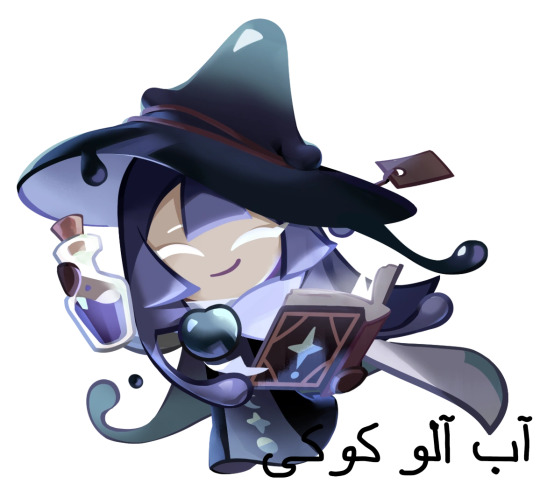
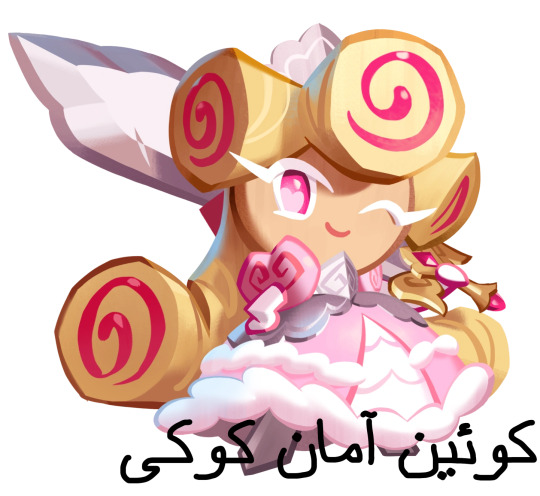

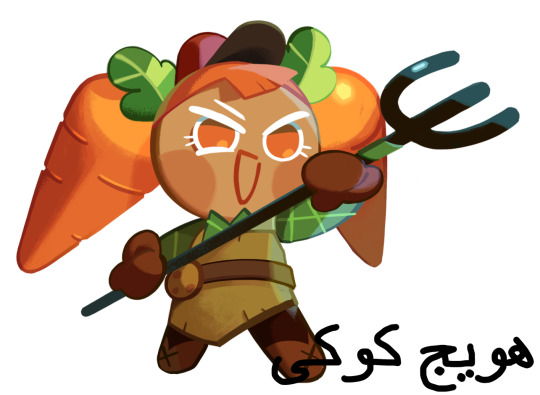

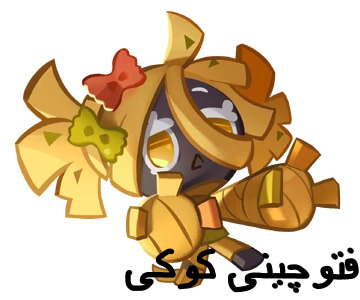

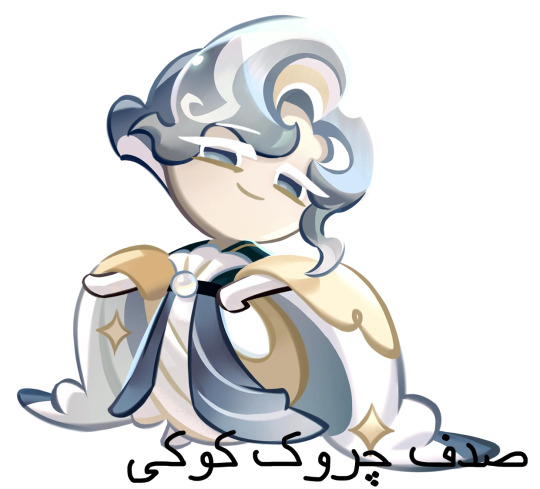

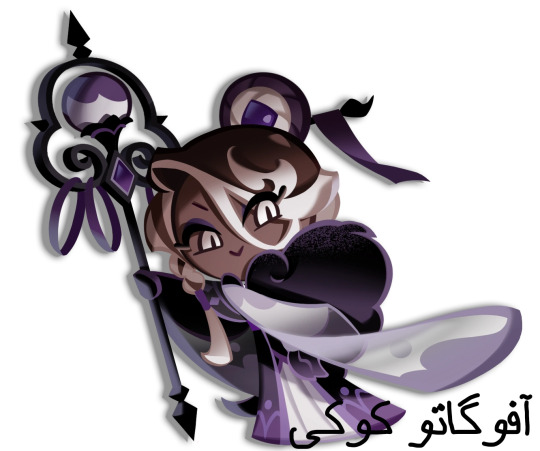

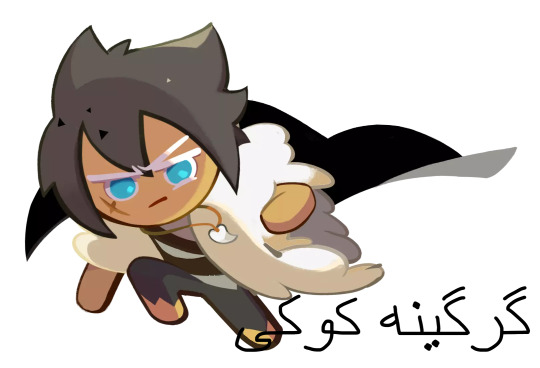

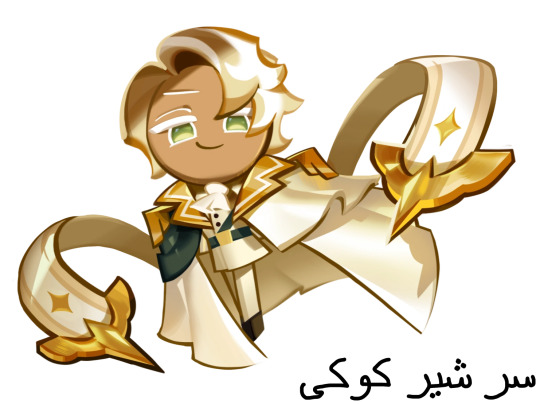
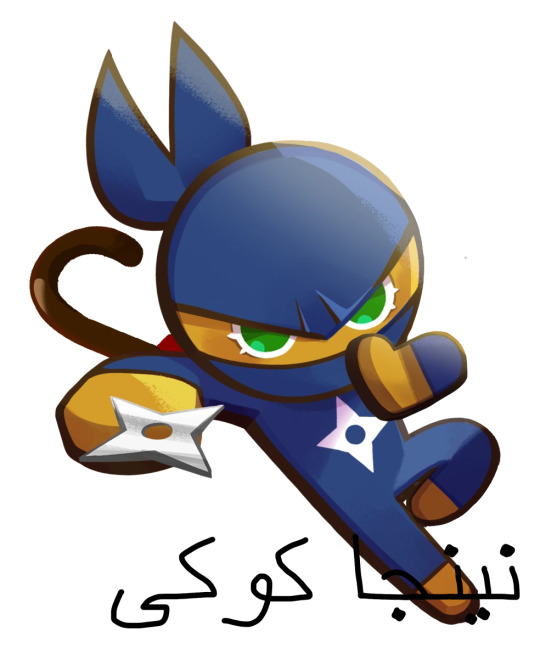
NOTE: minor correction, snapdragon is گل میمون and not گل میمونی except the Persian Wikipedia page spelled it like that so. I don't know.
Uh if you've been keeping up with my posts you'll know how this goes:
Prune Juice Cookie = آب آلو کوکی (ab aloo cookie)
Kouign-Amann Cookie = کوئین آمان کوکی (kouign-amann cookie)
Capsaicin Cookie = کپسایسین کوکی (capsaicin cookie)
Carrot Cookie = هویج کوکی (havij cookie)
Onion Cookie = پیاز کوکی (piaaz cookie)
Fettuccine Cookie = فتوچینی کوکی (fettuccine cookie)
Beet Cookie = لبو کوکی (laboo cookie)
Oyster Cookie = صدف چروک کوکی (sadaf cherook cookie
Madeleine Cookie = کیک مادلن کوکی (cake maadelan cookie)
Affogato Cookie = آفوگاتو کوکی (affogato cookie)
Rye Cookie = چاودار کوکی (chaavdaar cookie)
Werewolf Cookie = گرگینه کوکی (gorgineh cookie)
Snapdragon Cookie = گل میمون کوکی (gol meymoon cookie)
Clotted Cream Cookie سر شیر کوکی (sar shir cookie)
Ninja Cookie = نینجا کوکی (ninja cookie)
Fun fact:
گل میمون (snapdragon) is literally "monkey flower" in farsi. Guess who lost their dragon privileges in Iran.
also: YUP! Madeleines are cakes! Wonder what the St. Pastry Order would have to say about that...
EDIT: I got a tag that kinda upset me so I need to clarify here before I see anything else like this: this is Farsi, not Arabic. It's literally a racist stereotype that Persians are Arabs/that we speak Arabic and that all middle easterners are Arabs. English and Spanish and French and German and Italian all share the same alphabet but no one thinks they're the same language or that being able to read one means they can read all of them, so why are you assuming that for us?
#Snapdragon was the little monkey jumping on the bed I can't believe it /silly /j#Cookie run#prune juice cookie#capsaicin cookie#kouign-amann cookie#Carrot cookie#Beet cookie#onion cookie#fettuccine cookie#affogato cookie#oyster cookie#clotted cream cookie#madeleine cookie#snapdragon cookie#ninja cookie#rye cookie#werewolf cookie#language#persian language#farsi
61 notes
·
View notes
Text
Almyra headcanon/worldbuilding, language edition:
"Almyra" is an exonym, but the country adopted it as their "official" name at some point, because they have a fuckton of different languages and ethnicities that call the country different things, and designating one as the official over the others would Cause Issues™
The reason why the exonym is "Almyra" is because foreigners heard the most common endonyms and kinda squished them all together, the endonyms in question being
Amahura(shahr): etymology is amahra, the Middle Persian form of amesha (as in Amesha Spenta) meaning immortal
Ölmeziye (Khanlik): etymology is ölmez, Turkish for undying
(Mamlakat al-)Sarmadiya: etymology is sarmadiyy, Arabic for eternal
So regardless of language they all have the immortal/undying/eternal theme going on. Fits nicely with Khalid also meaning the same thing + Immortal Corps. I think it would make sense if the nickname for Almyra was also something like the Undying Realm/Immortal Realm/Eternal Realm.
Speaking of languages in Almyra, I hc that there actually isn't a single "Almyran" language... at the time of canon 3H, at least. But at some point in history, the government hires linguists to construct a Standard Almyran for the sake of literacy rates/ease of communication/etc. It's one of those things where it's not the first mother tongue for most but it's what they use for formal/public activities.
There are also multiple different scripts used in Almyra at the time of canon, but they eventually come up with a standardized Almyran alphabet for same reasons as above. Certain languages don't use most of the vowels and writes it like abjads, however.
Being that scripts in Almyra are written right to left, the books are bound on the right side. Because of this, Claude sometimes opens Fódlani books in reverse or puts his pen on the right side of the page to start writing. People around him don't think much of it because they don't know enough about Almyra to put it together, though.
The Almyran characters are all polyglots to varying extents, but the registers they know/use are different. Claude and Shahid grew up learning and using the very formal/"posh" versions of different Almyran languages, while Cyril uses the vernacular/"common" versions. Nader knows both and switches depending on the situation.
Claude may also have learned the vernacular versions (from Nader) for information gathering and scheming purposes, and he thinks he's good at talking like a commoner in the Almyran tongues. But from the perspective of someone like Cyril it sounds really cringe and tryhard lmao
24 notes
·
View notes
Text
The Sign of Four: The Story of the Bald-Headed Man
The Victorians were rather into what is known as chinoiserie, the European imitation of Chinese and other East Asian artistic traditions, although the popularity had somewhat peaked by this point.
The stethoscope had been invented in France in 1816 by René Laennec and the two-ear version was commercially available from 1852. The practice before and without one - see A Study in Scarlet - was to listen to the chest by applying your ear directly too. This was a bit awkward when dealing with a woman, the reason Laennec invented it in the first place.
We've seen Tokay before, in "The Last Bow".
Since tobacco came to Europe, there have been people who couldn't stand the smell. James I of England/James VI of Scotland wrote A Counterblaste to Tobacco in 1604, one of the earliest anti-smoking works. He would impose an import tax on tobacco, then later made it a royal monopoly.
It was also considered taboo to spoke in front of women for much of this period; hence the use of smoking rooms. It was also seen as unladylike for a woman to smoke at all; if she did, it evoked an image of prostitution. Unless you were working class, in which case women widely smoked.
Hookah comes from the Hindustani word "huqqa". Hindustani is also known as Hindi-Urdu; Hindi being the Devanagari-written version used in India and Urdu the Pakistani version written in the Persian alphabet. Both countries have tried to make their two versions somewhat distinct; Hindustani is not used in official terminilogy in either. In speech, the two are pretty much mutually intelligible, if you keep things simple.
The hookah remains popular in South Asia and the Middle East; smoking is not specifically prohibited in the Quran, but in recent decades, a number of very prominent clerics have declared it haram (forbidden). In much of Europe and North America, indoor smoking bans cover hookahs, places that offer them have had to switch to tobacco-free version.
In any event, hookah smoking is really bad for your health - you're basically inhaling the equivalent of 100-200 cigarettes in a single session.
Jean-Baptiste-Camille Corot was a French realist painter. Works of his can be found in the Louvre and New York's Metropolitan Museum of Art, among various other galleries.
Pondicherry, which we've seen mentioned before, is a city on the south-east coast of what is now India; it was a French territory at the time - the British had taken it more than once, but returned to them each time, the last time in 1814.
The lightweight division of boxing today covers weights of 130 to 135 pounds. The current British lightweight champion is James Tennyson, but he has not fought a professional bout since a technical knockout to Jovanni Straffon in 2021.
Agra, located in Uttar Pradesh, is best known as the location of the Taj Mahal, built on the orders of Mughal emperor Shah Jahan between 1631 and 1653 as a mausoleum for his wife Mumtaz Mahal after her death in childbirth in 1631. He is also buried there himself.
£500,000 in 1888 would be the equivalent of over £54m at 2024 values. Not a bad chunk of change.
22 notes
·
View notes